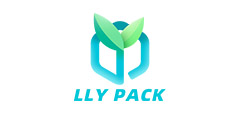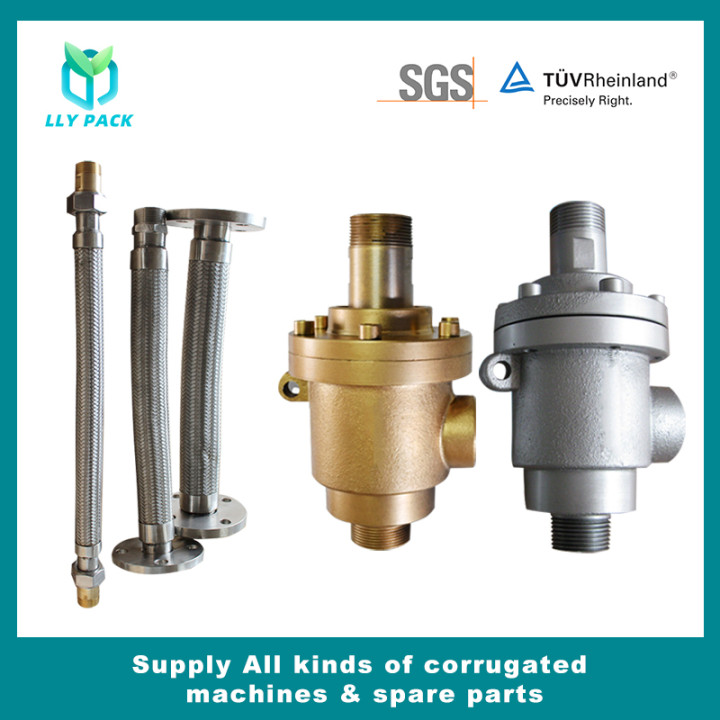China's corrugated box industry is entering a period of rapid development and adjustment. On the one hand, the production capacity is continuously expanding, and the equipment is continuously updated. As a result, the production lines of a large number of low-speed guide jaw single-faced machines are facing complete elimination or technological transformation. At the same time, most of the production of E and F, G and other small and miniature corrugated paperboards is mainly produced in the form of a single-sided machine and two-layer board, and among them, the guide claw type is mostly used. On the other hand, a large number of small carton factories still rely mainly on guide claw type single-sided machines.
The guide claw type single-sided machine generally has a running speed of only about 30 to 40 M/min, a low production efficiency, a high paper waste rejection rate, and a large energy consumption. Therefore, the production cost is high (the production of a micro cardboard is particularly prominent). However, due to its small investment and rapid production, the current China's single-sided claw-type machine still has a considerable amount of possession. The cover-type vacuum adsorption and reformation of the guide claw type single-faced machine is being applied more and more widely. It has become one of the preferred options for the carton plant to improve quality, improve efficiency, and increase efficiency, which is low in cost and quick in efficiency.
In the following, through the analysis of the working principle of corrugated paper single-faced machines, the different structural features and performances between the cover-type vacuum adsorption and the guide jaws are recognized.
The general structure of a corrugated cardboard single-side machine consists of a paper guide roller, a preheating roller, upper and lower corrugating rollers, a pressure roller, a pressurizing cylinder, a preheating roll 1, a preheating roll 2, and a forming composite device, and includes a coating roll and a uniform roll. Rubber roller, pulp tray, etc.
Corrugated paper is tensioned by a paper guide roller, the preheat roll controls the humidity, slides over the upper corrugating roll dome into the corrugated channel between the heated upper and lower corrugating rolls, and is pressed at the meshing point on the centerline of the two rolls After hot forming, close to the center of the lower corrugated roller roll running to the center of the coating roller and the lower corrugating roller, by the rubber roller to scrape off the excess glue to form a layer of uniform film on the surface of the coating roller pairs Corrugated paper is evenly coated with glue at the top. After the sizing, the corrugated paper continues to run with the lower corrugating roller, and the glue between the corrugating roller and the pressure roller center is heated and gradually pastes. After the two preheating rollers control humidity, the corrugated paper reaches the pressure roller and is heated. Press compound drying, thereby producing various types of two-layer corrugated cardboard.
The above process includes a complete process of preheating, ironing, sizing, gelatinization and compound drying of two-layer corrugated cardboard. One of the key process conditions is that the corrugated paper after ironing must be tightly attached to the lower corrugated roller roll to accurately complete the sizing of the top part of the corrugated paper and the compounding of the top paper. Any displacement of the corrugated paper after ironing on the lower corrugating roller will cause the formed corrugated sheet to be deformed, so that degumming, high and low blemishes, fleas, paper breaks, fungus edges, and falling defects are caused.
With the rapid development of corrugated board production technology, in order to meet the above process conditions and adapt to the production of wide-width, high-speed and various corrugated conditions, the structural improvement of corrugated cardboard single-sided machines is continuously innovating, and the corrugated paper is positioned on the lower corrugating roller. The method has been developed from the mechanical guide jaw type to the commonly used vacuum suction type, cover type vacuum absorption type, and air cushion positive pressure type (see FIG. 1, FIG. 2, FIG. 3, and FIG. 4). The cover-type vacuum adsorption (also called external suction type) is widely used due to its simple structure, strong adaptability, light manufacturing cost, and reliable operation. Its easy-to-renovate and short-cycle features make it the preferred choice for single-sided machine rebuilds.
Two. Guide claw type working principle The old single-sided machine uses a copper guide plate (also known as copper knife, guide plate, see Figure 1), the upper part of the guide plate is inserted into the groove of the corrugated roller Near the center of the upper and lower corrugated roller connection, the back is embedded in the groove of the coating roller, the arc surface of the abdomen is concentric with the lower corrugated roller and keeps a suitable gap larger than the paper thickness, and the lower part stretches close to the lower corrugating roller and the pressure roller Center connection. The formed corrugated paper is separated from the upper corrugating roller by a guide jaw plate, and the corrugated paper is placed in the jaw type of the lower corrugating roller to complete the coating and compounding process. Because there must be a running gap between the guide plate and the paper, when the lower corrugating roller runs quickly, the centrifugal force and gravity will always make the corrugated paper ejected from the lower corrugating roller, and the continuous friction with the guide plate will make the guide plate wear. The faster the speed is, the more drama is worn. When the guide jaw plate wears to a certain degree, the corrugated paper cannot be accurately positioned on the lower corrugating roller for coating and compounding processes, which directly affects the product quality. At the same time, the installation and adjustment of the guide jaw plate is demanding and difficult, and the axial stretching of the upper corrugated roller will also cause the guide jaw plate to wear out with its groove wall. Therefore, the wear of the guide jaw plate is large, and the production operation is not Stability, frequent adjustments, and costly expenses. The squeegee roller also causes the hardened glue on both sides of the leader plate to affect the quality of the cardboard, etc. All of this limits the running speed of the guide jaw type single-sided machine and affects the product quality.
III. Working principle of cover-type vacuum adsorption The cover-type vacuum adsorption consists of suction hood, paper guide copper foil, suction duct, damper, high pressure suction fan and muffler (see Figure 2). The suction vacuum groove is uniformly distributed on the roller surface of the lower corrugated roller. The high-pressure blower blows the air through the suction pipe and causes a negative pressure between the inner cavity of the suction hood and the lower corrugating roller to pass through the lower corrugating roller. The suction groove makes the formed corrugated paper tightly adhered to the lower corrugating roller, accurately completes the gluing and compounding process, and then is a paper guide copper sheet installed on the suction hood and extending into the suction groove of the lower corrugating roller. The composite dry two-layer corrugated board is guided out from the lower corrugating roller, during which the damper can be adjusted to control the suction volume, and the muffler can reduce the noise of the suction airflow. Replacing different types of corrugating rollers can produce various types of two-layer corrugated cardboard.
Outer cover type vacuum absorption adopts the principle of vacuum negative pressure to position the formed corrugated paper, eliminating the positioning instability caused by the mechanical wear of the guide jaw type structure, which is sufficient for high speed operation. Especially for miniature corrugated cardboard, the corrugated paper after molding has low strength, is easy to deform, and is not suitable for positioning. At present, the vacuum absorbing or air cushion positive pressure is only used in the world to adapt to high speed operation. We have successfully reconstructed the domestic first 1.6M format F-type (楞0.75) and 1.25M G-type (楞0.55) miniature corrugated outer suction single-sided machines for high-end color box packaging. The high-quality micro-corrugated cardboard has achieved very good results, which is difficult to achieve with the guide jaw type single-sided machine. When the product paper format is only 50% of the corrugating roll nominal format, it can also run normally and steadily, which fully demonstrates the good working performance of the cover vacuum adsorption.
Fourth, the corrugated cardboard single-sided machine cover vacuum adsorption transformation content 1. New external suction corrugating roller. The outer suction hood is mounted on the lower corrugating roller, and a suction slot distributed at a certain distance is processed on the roller surface of the lower corrugating roller. The upper corrugating roller has no groove, and the original corrugating roller is eliminated.
2. The new rubberizing roller, the guide plate groove on the original coating roller will affect the composite quality, the new rubberizing roller has no groove.
3. According to the specifications of single-side machine and corrugating roller design and manufacturing suction hood device, paper guide copper plate device and installation and fixing device.
4. According to the actual structural position of the single-side machine and the surrounding environment, design the direction of the suction duct, determine the position of the high-pressure fan, and manufacture the suction duct system and the high-pressure fan bracket.
5. According to the corrugating roller specifications, select the matching high pressure blower and muffler. Design electrical controls.
V. Corrugated cardboard single-sided machine cover vacuum adsorption transformation program 1. On-site survey and verification single-sided machine and corrugated roll of the relevant size and technical parameters.
2. On-site design of pipeline orientation and location of high pressure fans.
3. Identify other modifications and repairs that must be added.
4. Professional company production (general production time does not exceed the production cycle of the new corrugating roller).
5. On-site reconstruction installation and commissioning (In general, 2 days, some new repair items can be removed and sent to a professional company for repair).
The entire renovation process requires only a few hours of downtime during on-site surveying and two days of downtime during installation and commissioning, with little impact on production. If the supply and demand parties have a thorough and coordinated arrangement, the downtime can also be shortened.
6. Contents of other transformation and repair projects that must be added Because most of the single-faced machines that need to be rebuilt are old machines, and many parts have worn out and need to be repaired, replenished and updated, it may be necessary to add other transformation and repair projects. (Checked by the engineering and technical personnel of a professional company)
1. Repair the pressure roller after it has worn out.
2. The squeegee roll is repaired after wear.
3. A new system is required for the wear of a pair of transmission gears on the lower corrugating roll and the pressure roll (this item is not included in the transmission and universal joint drive).
4. Repair, replacement and replenishment of components for bearings, oil seals, sprockets, cylinders and other transmissions, pneumatics, seals, and mechanical parts.
5. Restructuring, replenishment, replacement and repair of electrical control parts.
The corrugated cardboard single-sided machine's cover-type vacuum adsorption reformation has the advantages of economical cost, mature and reliable technology, short rebuilding period, and small impact of stopping production. It is widely used in the carton industry. However, at present, there are various domestic and foreign reconstruction technologies, some of which are rough, cut corners, and use aluminum plates instead of aluminum plates, and aluminum plates are replaced with iron plates. High-pressure fans are not manufactured by professional manufacturers, and there are hidden dangers of stability and safety performance, which directly harm user interests. Therefore, carton manufacturers should select professional manufacturers to consult with professional manufacturers on the related transformation matters, and conduct thorough and detailed inspections and product reviews on the use of professional manufacturers and their product users, after-sales service networks and quality of professional manufacturers, etc. The level of technology is to be identified and careful selection is better. (Wujin Haili Roller Co., Ltd. Du Jianchun)
EnglishEspañolPortuguêsDeutschहिंदी日本語ខ្មែរNederlandsالعربية한국어मराठीMalagasyItalianoPolskiSvenskaελληνικάPусскийภาษาไทยTürkShqipMagyarViệtSamoaМонголMaltiIndonesia FrançaisMelayuҚазақшаYorùbáবাঙালিעִברִיתGàidhligSomaliEesti keelKreyòl Ayisyennorskčeštinaفارسیతెలుగుမြန်မာBosanskiMaoriქართულიRomânăбеларускіУкраїнськаతమిళGaeilgeSuomalainenپښتوລາວհայերենSlovenščinaFilipinoO'zbekÍslenskaייִדישLatviešuGalegoFryskनेपालीKurdîCatalàбългарскиHawaiianHrvatskiਪੰਜਾਬੀWong JawaKiswahililëtzebuergeschisiXhosaEuskalSundaZuluગુજરાતીТоҷикӣ
- Dom
- O nas
-
Products
- Linia falisty
- Maszyna do falistej >
-
Przedmowy z maszynami falistymi >
- Przegub obrotowy
- Grzebień dla strzelca Slitter
- Klocki hamulcowe
- Pompa przeponowa do kleju
- Pasek do odpadów
- Chuck rozszerzający
- Elastyczny metalowy wąż
- Ściernica
- Taśma dla Splicer
- Wałek falisty.
- Blade
- Napowietrzny pasek mostka
- Koło słońca.
- Przenośnik pasa
- NC Cutting Blade
- Pułapka parowa
- Cylindry pneumatyczne
- Hamulec pneumatyczny
- Air Bellow Spring
- Pompa próżniowa pierścienia wodna
- Smar z prasą falistą
- Gumowa dystans
- Spłata tytanu
- Slotter drukarki Flexo
- Maszyna do drukarki Flexo >
-
Części zamienne drukarki >
- miedziana taca
- Stojak na druk
- Pompa ARO.
- Pędzel stalowy i mosiężny
- Filtr atramentowy
- Ostrza doktorskie.
- Pokrywa kowadła
- Blade Slotting.
- Taśma z włókna
- Wisząca ramka
- PET-Strip z filmem
- R i BAK DRUKOWANIE DRUKOWANIA
- Koło karmienia
- Jeden sposób łożyska
- Rotary Die Board.
- Pojedyncza pompa membrany
- Blok końcowy kanału atramentu
- Gumowa przepona
- Zawór Duckbill
- Magnetyczne hamulec sprzęgła
- Wiszący pasek groove
- Maszyna pakująca >
- Maszyna kartonowa >
- Części maszynowe kartonowe >
- Podwójne pasy facerów.
- System klejenia >
- Tordboard Cuting Blade >
- Tungsten Steel Blade >
- Ściernica
- Stripper
- Ostrze maszyny do pakowania >
- Sprzęt przed wyciskaniem >
-
Przemysłowe ostrze cięcia >
- Płytki tnące okrągłe ostrze piły
- Blade tnące metalu
- Piła do cięcia drewna
- Piła pokarmowa piła
- Ostrze cięcia światłowodowe
- Ostrze Chipper
- Połączenie zginające
- Ostrze na maszynę do krojenia warzyw
- Stalowe cienkie ostrze
- Tsukatani Die Cutting Blade
- Drukarka Die Cut Blade
- Maski Blienie
- Slitter Rewinder Blade
- TMR Blade
- Okrągłe ostrze tytoniowe
- Blor ścinania rolki
- Ząbkowany nóż do pakowania
- Pasek do cięcia
- Doktor Blade
- Okrągłe ostrze
- Trzy dziury ostrze
- Ceramiczne ostrze
- Ostrze noża opaski do tkaniny
- Ostrze noża zespołu do pianki gąbki
- Ostrze noża opaski do rozdzierania maszyny
- Ostrze noża zespołowego na papier
- Uchwyt ostrza
- Przemysłowe ostrze cięcia
- Frezowanie noża
- Szlifierka kątowa
- Blor shredder
- V rowkowe ostrze
- Nożyczki elektryczne
- CNC Blade i narzędzia maszyny
- Ostrze przetwarzania żywności
- Aktualności
- wideo
- Skontaktować
- Wyślij zapytanie










